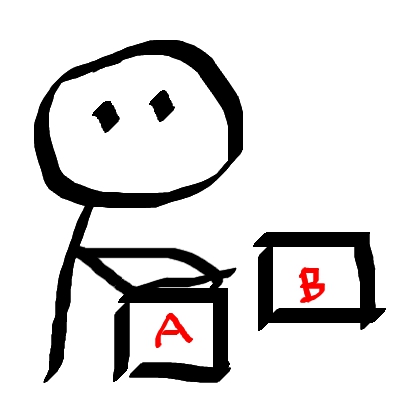Tag: process
Smithsonian Transcription Center: Growing as a Community (Blogpost)
The Smithsonian Transcription Center digital volunteers have grown into a community of volunpeers–collaborators dependent on the work and input of the group–in just over a year.
In this post for Smithsonian Institution Archives’ Bigger Picture blog, I explained a bit about the ways the volunpeers report they use the system and how the peer review process and “eyes per page” can be understand and assessed. I’ll share more about the ways volunpeers learn by doing and how the Transcription Center is a dynamic space in which the process is as important as the product. We continue to learn about our volunpeers’ needs and the ways we can make transcription better.
Categorizing: A second but interrelated process for making knowledge

Categorizing is another process for making knowledge. As a series of steps, categorizing not only compliments making choices; it is built into the process of making choices. Perhaps we should also use the term “classifying” to start, rather than categorizing. Examples of classification abound in science, library and archival practice, and even social relationships. Can you recall the scenes in Mean Girls and Ten Things I Hate About You, in which helpful social gatekeepers identify relevant groups of high school students to a new student unfamiliar with these groupings?
Categories or classes are socially constructed—quite literally in the last example—and decisions and divisions are implicit in the process. Perhaps more importantly, the socially constructed nature of categories and classes means that they can be changed – and by people. Finally, categories and classes are built by making differences between things (items, concepts, words, people); and successfully defining difference, Hall (1997) reminds us, is an act of power but one that is part of a dialogue. Regularly reinforced and resilient power, yet not fixed (socially constructed!). Finally, classifying is essential to culture and meaning, where an order is established by relating things to one another.
So let’s review: categories and classes are divided by and bounded through socially constructed definitions and through specific language choices.
Taking that forward, we can think about the process of categorizing in relation to what we’ve discussed before about making choices. Specifically, that excluding or including things in choices creates relationships of value between what is included and excluded; these hierarchical relationships are rooted in language, which conveys meaning and is as adaptable as the social value it suggests.
As categories are established, relationships between categories are also built. Then as an individual or an institution approaches an item that requires classification, s/he/it will consider what is known from existing systems of knowledge. Thus, it takes meaning to make meaning.
Consider Bishop & Jaworski’s (2003:3) take:
“Academic study, but in fact all aspects of experience are based on acts of classification, and the building of knowledge and interpretations is very largely a process of defining boundaries between conceptual classes, and of labelling those classes and relationships between them.”
Bishop & Jaworski (2003) go on to suggest that language is the central means through which classification becomes possible; thus language itself loses neutrality, while becoming a “key ingredient in the very constitution of knowledge.”
Most recently, I have been considering the ways the categorization process might be built into the process of devising strategies for crowdsourcing. It’s been a bit chicken-or-egg in several senses: i.e. do we build the classification process into the experience or and can we even appropriately engage people without understanding the ways they might want to classify or use and access categorized information? So many things to consider – and, as needs may develop over time, how might we create a flexible and responsive but reliable means of categorizing information?
Return to the previous examples I’ve suggested for knowledge building in the digital realm, which I’ve listed again below. Can you pick some moments of categorization here?
- the collaborative process of editing on Wikipedia
- educational institutions and crowdsourcing information about unidentified women scientists, as with the Smithsonian Institution Archives http://siarchives.si.edu/blog/annual-call-help-identifying-women-scientists
- the ways fans of tv dramas on social media platforms share/reblog/retweet, discuss, and debate plot and pieces of news, then reference relevant pieces of information to create an “accepted” group understanding – such as an important event, a character’s motivations, screenwriter and actor/tresses decisions and more
- and even tagging posts on Tumblr and Twitter to first organize information and secondly, make that information more easily identified by others using searching tools and services
References:
Bishop, H. & Jaworski, A. (2003). ‘We beat ‘em’: Nationalism and the hegemony of homogeneity in the British press reportage of Germany versus England during Euro 2000. Discourse & Society, 14(3), 243-271.
Hall, S., (Ed.). (1997). Representation: Cultural representation and signifying practices. London: SAGE Publications Ltd.
